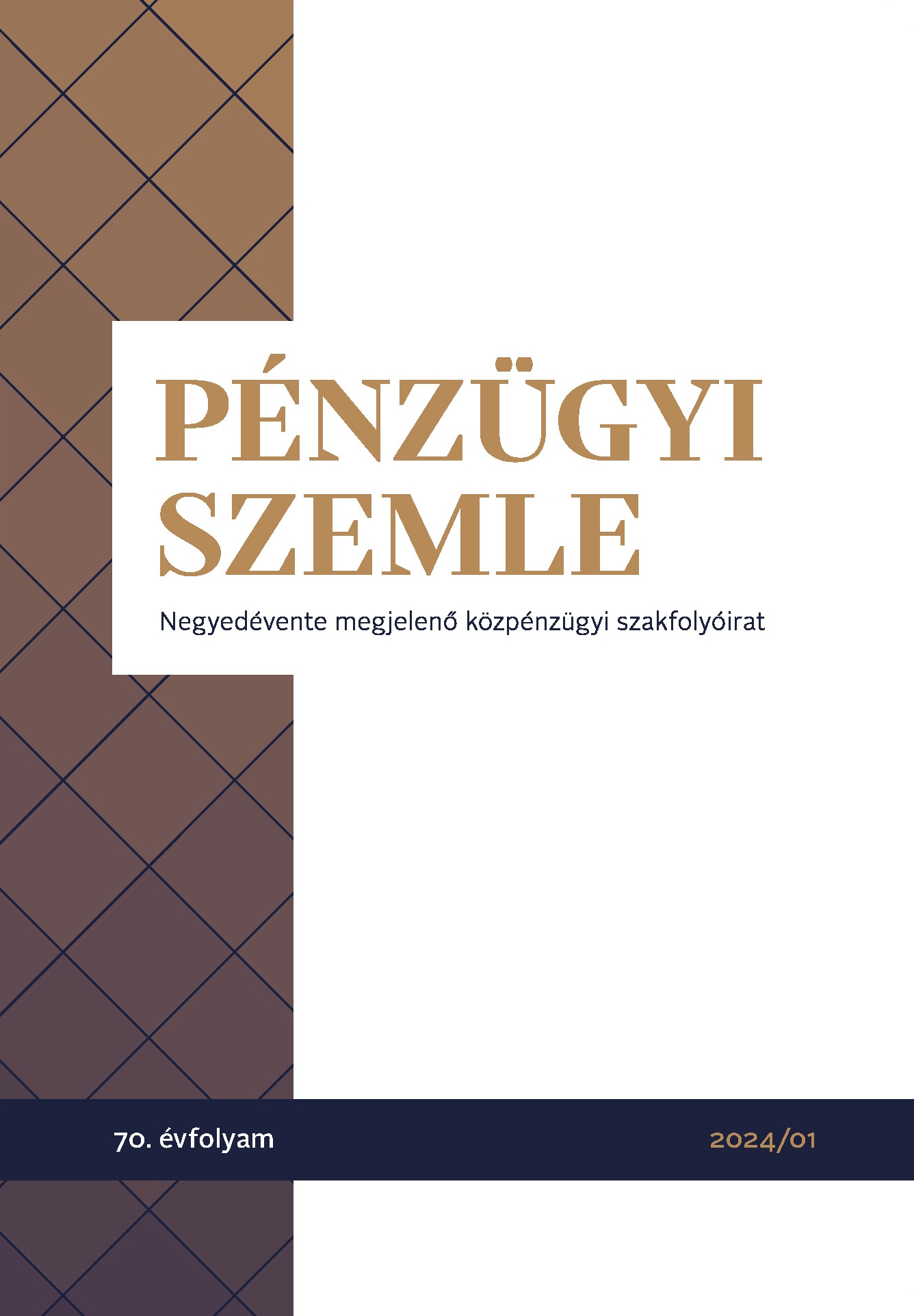Evolution of the revenue/ expenditure structure and passenger cost coverage ratio of regular passenger transport between 2007 and 2022
DOI:
https://doi.org/10.35551/PFQ_2024_1_2Keywords:
bus, financing, user cost coverage ratio, scheduled transport, rail, railways, R40, H23, G30, H41, G38Abstract
This article presents a general methodology for aggregating the actual costs and revenues of public transport in Hungary, which allows to calculate a realistic passenger (user) cost coverage ratio for the main players in the domestic market (MÁV-Volán Group, GYSEV, BKK). After an international perspective and a presentation of the specificities of the domestic market, it is concluded that the cost coverage ratio for fixed rail transport is significantly lower than for public transport services on road. The main reason for this is that fixed rail infrastructure is expensive to develop and operate and is mainly used by public passenger transport. The ridership ratio is significantly reduced by significant investments, and this has been analysed both on a time series and average basis. We present the timetable, tariff changes and major investments that have had an impact on ridership rates, typically only to a small extent. Our analysis is financially oriented and only touches on positive externalities, social benefits and the general government balance
References
Ács B. (2018): Who pays the ferryman? - or the financing paths of intercity passenger transport, European Transport Congress, 8th International Conference on Transport Sciences - Győr 2018, pp. 1-12 https://cots.sze.hu/2018
Ács B. – Kövesdi I. (2022): Can public transport be free? Közlekedés és Mobilitás, 1:6, pp. 72-79. https://doi.org/10.55348/KM.6
BKK (2013-2023). [previous year] Annual Report of BKK (Budapest Transport Centre).
Municipality of Budapest (2008-2023): The [serial number] Municipal Decree of the General Assembly of the Municipality of the Capital of Budapest on the implementation of the [serial number] Municipal Decree on the consolidated budget of the Municipality of Budapest [previous year]
EMTA (2021): EMTA Barometer 2021 - Based on 2019 data, 15th edition, European Metropolitan Transport Authorities, 8 p. https://www.emta.com/wp-content/ uploads/2021/11/211007-barometeremta-2019.pdf
European Commission (2015): Guide to Cost-Benefit Analysis investment projects. Economic appraisal tool for Cohesion Policy 2014-2020, Publications Office of the European Union, Luxembourg, 358 p. https://ec.europa.eu/regional_policy/sources/studies/cba_guide.pdf
European Commission (2016): Report from the Commission to the European Parliament and the Council: Fifth monitoring report on the development of the rail market https://op.europa.eu/en/publication-detail/-/publication/80b58c26- bd30-11e6-a237-01aa75ed71a1/language-en/format-PDF/source-search
European Commission (2021): Report from the Commission to the European Parliament and the Council: seventh report on monitoring the development of the rail market pursuant to Article 15(4) of Directive 2012/34/EU of the European Parliament and of the Council, COM(2021) 5 final, Brussels, 13.1.2021, https://transport.ec.europa.eu/transport-modes/rail/market/rail-market-monitoring-rmms_en https://eur-lex.europa.eu/legal-content/EN/TXT/?uri=CELEX- :52021DC0005 48 STUDIES PUBLIC FINANCE QUARTERLY, 2024/1
European Commission (2023): Report from the Commission to the European Parliament and the Council: Eighth report on monitoring the development of the rail market, based on Article 15(4) of Directive 2012/34/EU of the European Parliament and of the Council, COM(2023) 510 final, Brussels, 13.9.2023, COM(2021) 5 final https://eur-lex.europa.eu/legal-content/EN/TXT/?uri=CELEX:52023DC0510
Kormányos L. – Tánczos K. (2007): Conditions of a quality public railway service in Hungary, Periodica Polytechnica Transportation Engineering, 35(1-2), pp. 23- 34. https://pp.bme.hu/tr
Kövesdi I. (2017): The public balance of transport in Hungary 2004-2015, Conference on Transport Economics - Győr 2017, pp. 1-13. https://cots.sze.hu/2017
Kövesdi I. (2023): Greener car taxation in Hungary, Közlekedéstudományi Szemle, 1/2023., pp.4-20. https://doi.org/10.24228/KTSZ.2023.1.1
Kövesdi I. – Horváth B. (2023): Public revenues and expenditures of transport between 2004 and 2021, 13th International Conference on Transport Economics - Győr 2023, pp.235-248. https://cots.sze.hu/downloadmanager/download/nohtml/1/id/44021
Kövesdi I. – Oszter V. (2023): the impact of the coronavirus pandemic (COVID19) on transport services, Transport and Mobility, 2023, 2:1, pp. 34-48. https://doi. org/10.55348/KM.26
Public service reports (2011-2023): MÁV-START, GYSEV, MÁV-HÉV, Volánbusz and its predecessors
Steer Davies Gleave (2016): Study on economic and financial effects of the implementation of Regulation 1370/2007 on public passenger transport services, Final Report https://transport.ec.europa.eu/system/files/2016-09/2016-02-effects-implementation-regulation-1370-2007-public-pax-transport-services.pdf
Szeri I. – Dancz Á. (2023): Modernisation possibilities of the domestic public passenger transport discount system, Közlekedéstudományi Szemle, 4/2023, pp. 14- 27 https://doi.org/10.24228/KTSZ.2023.4.2
Company annual accounts (2008-2023): Annual accounts [previous year] closing the general business year (MÁV-START, GYSEV, MÁV-HÉV, BKK, BKV, Volánbusz and its predecessors)
Downloads
Published
How to Cite
Issue
Section
License
Authors assign copyright to Pénzügyi Szemle / Public Finance Quarterly. Authors are responsible for permission to reproduce copyright material from other sources.












